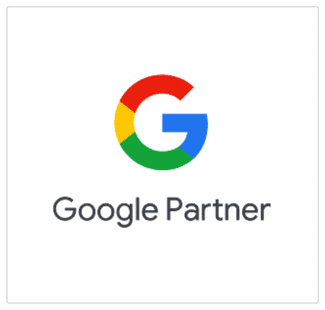Surfing the web, you have undoubtedly encountered the term URL and used URLs to access HTML pages on the internet. However, have you ever wondered what the URL of a website means, what the components of a URL are and the limitations of URLs?
When someone wants to surf the Internet, the most common way is to browse websites. But while it may seem simple enough to open a laptop, double-click on the Chrome or Safari browser and browse as you please, there is a lot going on behind the scenes that you may not be aware of.
The first step in the process is the web browser that serves as your gateway to the internet.
A web browser is a simple software program that serves as a display for viewing websites on the internet. Think of a web browser as a computer screen. A computer screen displays content that is produced by the computer’s operating system. The web browser is a kind of screen for the internet. When someone wants to know what the URL of the web site is, they ask what the URL is.
If web browsers display websites, then what is a URL? When someone sends a Christmas parcel, they need to provide an address of the recipient so that the post office knows where to send the box.
Well, the URL is the address a web browser needs to locate the specific page you are looking for.
Where is the URL? The URL is found in the top bar of a web browser called the address bar.
The easiest way to understand what a URL means is to think of a URL (link) as the name of a file on the World Wide Web.
Do you need professional SEO services for your business website?
However, you should also bear in mind that URLs can also indicate resources, such as database queries, etc.
What is the definition of a URL?
URL is an acronym: U R L = Uniform Resource Locator. It represents a reference (an address) to a resource on the Internet.
What are the components of a URL?
A URL (a web address) has two main components:
- Protocol identifier: “http” or “https”
- Resource name: “example.com” or “url-address-of-your-site.co.uk”
Note that the two components mentioned above are separated by a colon “:” and two slashes “//”.
The protocol identifier indicates the name of the protocol that will be used to obtain the resource, while the resource name is the full address of the resource.
For example, in most cases, to serve hypertext documents, the transfer protocol used is HTTP (more recently HTTPS, an extension of the HTTP protocol, which is a new standard in security).
What are the limitations of URLs?
Have you decided to create a URL for your website or business? The most important limitation to keep in mind is how it is ranked in all browsers and search engines.
Specifically, for your website URL to render correctly, it must be shorter than 2083 characters.
However, at the same time, it is also important to take into account that the name of the resource (site.ro) determines how easily it can be remembered and communicated.
In order to benefit from the advantages offered by a URL, it must be short, clear, concise, easy to remember and easy to pronounce.
What is a URL (link)?
A URL or link is human-readable text that has been designed to replace the numbers (IP addresses) that computers and mobile devices use to communicate with servers.
What is the optimal format of a LINK (URL address)?
To make sure that the website (resource) can be accessed correctly by search engine bots, it is recommended that the URL (website link) be of the form:
Why are website URLs important?
If you have a website it is vital to know the importance of a good domain name, which is why we recommend that you read on in this article.
A website’s URL/link is a significant element because, besides allowing potential visitors to view the content on the website, it contributes decisively to the success or failure of the website online.
Therefore, the 3 most important aspects in creating a url are: accessibility, optimization and professionalism of the site.
As mentioned before, a domain name is the URL of the website. It is entered by visitors in different browsers to reach the products, services or content offered and to get in touch with your online activity.
Without a domain name, potential visitors will not be able to locate your website and will not be able to access the content on it or buy your products and services.
And because a domain name can be pointed to any web server, it is vital that it is secure, at which point you need to purchase an SSL Certificate to use as a protocol identifier – HTTPS.
Apart from allowing Internet users to reach your website, the URL (link) of a website or a page on a website has other uses.
It can make a decisive contribution to the promotion of your website by the simple fact that it can be optimised for search engines, a strategy that has the potential to deliver you quantitative and qualitative traffic in the long term.
Also, a website with the right address will look more professional and the business that the website represents will look more competitive with a domain name that matches the brand, the website and the business.
At the same time, from an SEO point of view, URLs (links) are vital because they can contribute to:
- Improving the experience of potential customers when they come into contact with your brand/website online.
- organic search engine rankings. URLs are a minor ranking factor in the SERP, they are used by search engines to determine the relevance of a page or resource to searches made by people.
Are you a visual person? Take a look at the infographic below to understand exactly what address means, what it is and what URLs considered SEO Friendly by search engines look like:

URL Examples
URLs can be very long if the different parts are complex. Most of the time, modern web browsers will not display the URL fully visible in the address bar. Browsers will often only display the domain name. If the address bar is clicked and highlighted, the full address will be displayed.
The following are some examples of different URLs that are commonly found on the Internet.
- https://re7consulting.ro/
The main web address is quite simple. Since there is nothing written after the domain name except a slash, which is required, it takes the user to the home page of the site. - https://re7consulting.ro/servicii/
This URL still takes the user to the same site, but the address is not the same. After the slash is the word “services”, which means that the address will take the user to a page that is linked to the home page, whose Web address is given in exactly this way. - https://re7consulting.ro/servicii/campanii-ppc/facebook-ads/
This is a much longer URL and appears after you reach a page that is in a subordinate relationship to the main pages, also known as a subcategory. For example, in the URL example above, “facebook-ads” is the name of the page we are actually on, and the preceding steps in the link delimited by the slash represent the general categories that this page is in. - https://re7consulting.ro/
As you can see, this type of home page URL does not display www. This is not an error, but a choice of the administrator. The acronym for World Wide Web is no longer necessary and acts more like a traditional substitute. In fact, most websites can still be accessed without necessarily typing www.







